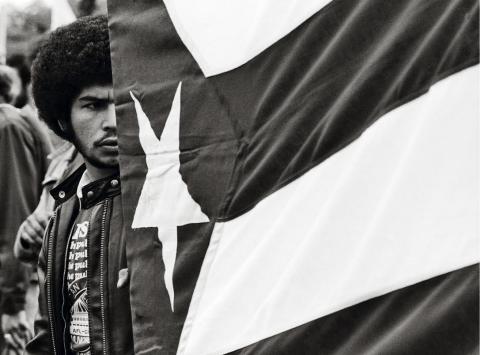Long ago, I became a collector of words and visual images, especially black-and-white photographs. I keep my journal with me at all times to record beautiful imagery, arresting details, and anything that makes me question life in a way that demands a story.
Below are selected steps from a prewriting journal exercise I designed to begin an original story using black-and-white photographs as creative inspiration.
I hope this exercise will be as fun and as productive for you as it has been for me and my students
Before beginning this exercise, select two black-and-white photographs. The images can be digital or in hard copy. The first photograph should contain people. The second photograph should contain or imply a sense of setting or landscape and may or may not include people. The mood and the subject matter remain open to you, the writer, who selects the photographs.
The first photograph is the most important resource for the exercise. Become acquainted with the details of the first photograph by examining it carefully for five minutes. Try to notice things that others might not see.
Step One: Naming
Give the first photograph a name. This name will serve as the working title of your story.
Now, give the characters (the people in the photograph) names and give the place in photograph (the setting) a name.
Step Two: Questioning
Make a list of as many questions as you can think of about the first photograph. What is happening in the photograph and why? Who are these people? What visual aspects seem surprising, strange, or out of place?
Ask yourself the standard dramatic questions: Who . . .? What . . .? Where . . .? When . . .? Why . . .? How . . .?
What about this image seems mysterious or unexplained?
If you were a detective or a reporter, what questions would you ask the people involved in the photograph?
Step Three: Visual Details, Listing
Make a list of all the visual details in the photograph. Look closely. Try to see what others might not see. Examine the smaller details. What seems surprising, original to the image, or out of place? List objects and components of objects in the images. Break down the characters into short physical descriptions, focusing on faces, hands, costumes, expressions, bodies, and impressions. Now, do the same with the background by breaking down the context and props into smaller details.
Do not write in complete sentences for this step. Use short lists as a way to quickly convey and record information. Use strong nouns and adjectives in your lists.
Step Four: Senses Unseen
Use your imagination to see beyond what is in the actual photograph. Go beyond the image by giving the photograph color. Return to your list of visual details in Step Three and assign a color to each item in the lists. Choose very specific colors of distinct hues or shades. Do not simply write “green” or “blue,” but “robin’s egg blue, ocean blue, blue-green, dark green,” so that you are able to distinguish between the varying shades and color combinations.
Now, deal with the senses you cannot see by making lists of what the world of the photograph would sound like, smell like, feel like, and taste like. What are the senses involved in experiencing the photograph’s scene first-hand? Imagine living inside the photograph. What are the noises, odors, textures, and temperatures that can be experienced?
Make a list of all the sensory details you can imagine.
Step Five: Movement
Give the photograph movement by making a list of verbs that would apply to the people, animals, environment, and/or objects involved. Choose strong verbs to show the way every detail moves or changes.
How might the people or the objects in the photograph shift positions, and why? How can they change or become something different?
Step Six: Point of View
Choose a point-of-view character. To do this, go back to the character(s) you have named and choose one character to be the focus of the story. This is the character whose actions, thoughts, and sights the reader will witness throughout the story. Or, you may choose an unseen character who is in your position—a viewer, an outsider, or a witness, who is outside of the frame of the photograph, observing.
Now, choose a point-of-view for that character: first person, second person, or third person.
(These choices—point-of-view character and point of view—will inform the way you focus your entire story. Make sure to write in consistent point of view once you begin the first scene and the first draft.)
Step Seven: Creating Conflict through Motivation
Begin to understand your point-of-view character by asking the following three questions, which method actors ask when creating or approaching a character in scene:
- What does the character want, need, or desire, and why? (This is the character’s motivation.)
- Where is the character coming from? (Or, what happened to the character before this photograph was taken?)
- Where is the character going? (Or, what will happen to the character after this photograph was taken?)
Step Eight: Moving the Frame
Still working from the first photograph, write about what is outside the frame of the photograph. What has been left out of the photograph and why? What can’t we see and what difference does it make? For instance, if we see an image of a very prim and proper lady drinking from a teacup but we can’t see one of her hands because it’s out of the frame, what a difference it would make if she were giving the photographer the bird! Try to imagine what has been left out, what is out of focus, too distant, in another room, hidden, or merely out of the frame. Then, try to imagine something that seems much different from the tone, or mood, of the current framed image—something that will complicate things, adding irony, tension, and a new dimension.
Write about what has been left out, something that alters the image by its absence, a visual secret.
Step Nine: Connections Between Unlike Images
Now, go to the second black-and-white photograph you have chosen. Compare it to the first photograph you’ve been working with. How are the photographs different? What do they have in common? Create or discover some narrative connection between the two photographs and write about that connection. For instance—is the second photograph an image that a character in the first photograph has remembered or imagined? If the second photograph includes images of people, are those people somehow linked or related to the people in the first photograph? There are all types of connections to be made. Get some perspective and insight on the fictional world you are creating by bringing something foreign into that world—another image. See how this deepens and complicates the story you are creating.




